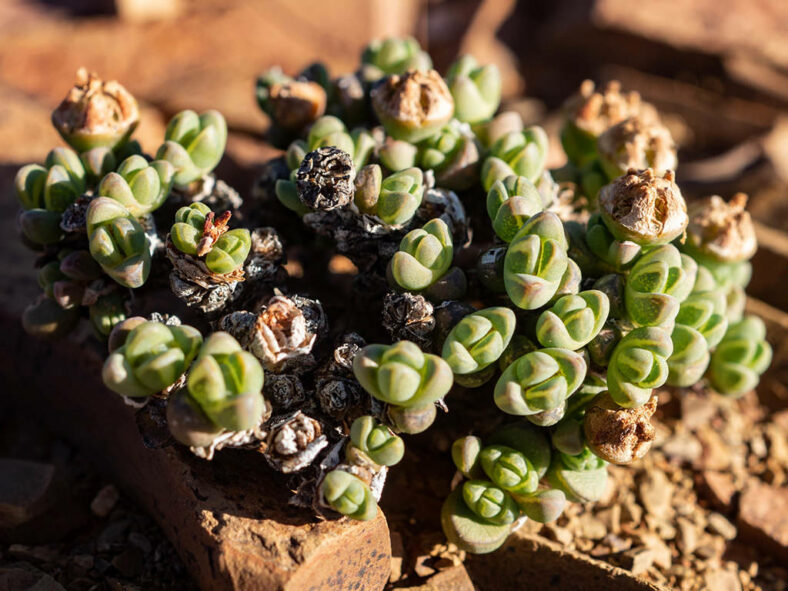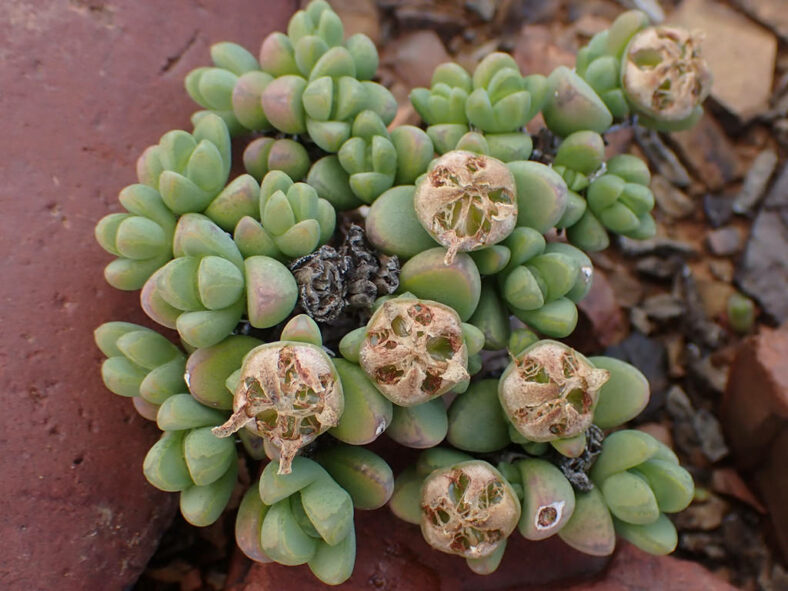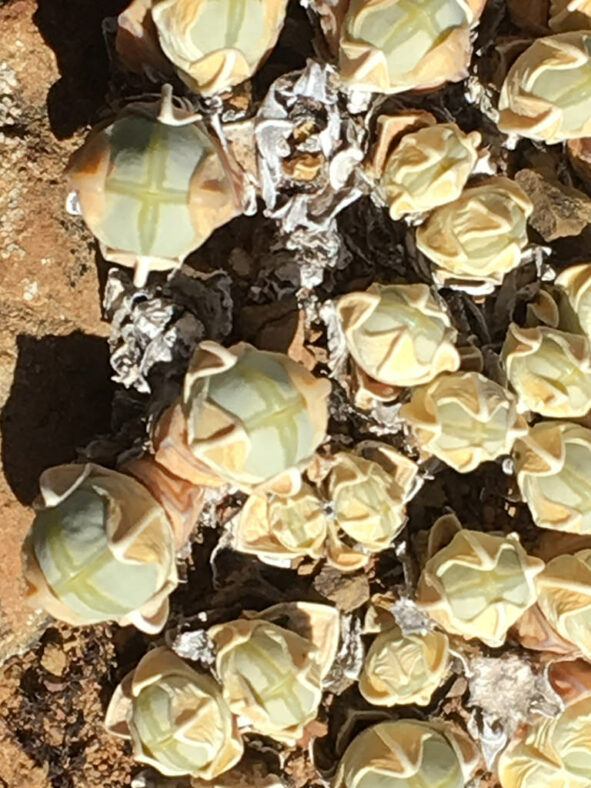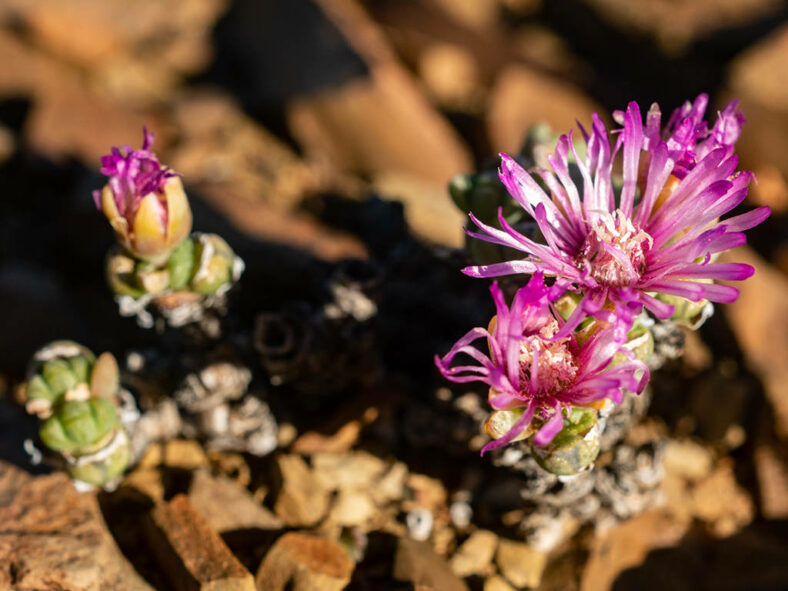Louisa Bolus has described this species twice in two years, once as Ruschia pumila and once as Ruschia levynsiae, due to the significant difference in appearance between plants in dormancy and those during the growing season.
Scientific Name
Antimima pumila (L.Bolus ex Fedde & C.Schust.) H.E.K.Hartmann
Synonym(s)
Mesembryanthemum pumilum, Ruschia pumila
Scientific Classification
Family: Aizoaceae
Subfamily: Ruschioideae
Tribe: Ruschieae
Genus: Antimima
Etymology
The specific epithet "pumila" (pronounced POO-mil-uh) means "dwarf" and refers to the size of this species compared to the other species when it used to belong to the genus Mesembryanthemum and Ruschia.
Origin
Antimima pumila is native to South Africa. It occurs mainly in the triangle between Ceres and Laingsburg in the Western Cape and Sutherland in the Northern Cape province.
Description
Antimima pumila is a compact succulent subshrub with tightly packed leaves on short branches. The first leaf pair has a sheath that embraces the next leaves at the base. During dormancy, the second leaf pair is enclosed, and it unfolds during the growing season, revealing two nearly oval leaves slightly fused at the base. The leaves are gray-green, papillate, and have cartilaginous margins. They can grow up to 0.4 inches (1 cm) long.
During winter, Antimima pumila produces daisy-like flowers ranging from mauve to magenta. The fruits are 5-locular, woody capsules.

How to Grow and Care for Antimima pumila
Light: Antimima pumila requires bright light but not too much direct sunlight. So, a windowsill that receives 4 to 5 hours of direct sunlight in the morning and partial shade in the afternoon will be a perfect spot for indoor growing.
Soil: The plant thrives in porous soil, allowing the water to drain away quickly. Therefore, use commercial soil for succulents or make your own well-draining mix.
Temperature: High temperatures are not a problem as long as there is plenty of fresh air, but this plant is not cold-hardy. It grows best in USDA Plant Hardiness Zones 9b to 11b, with average minimum winter temperatures ranging from 25°F to 50°F (- 3.9°C to 10°C).
Watering: Knowing when, how much, and how often to water is crucial for keeping Antimima pumila healthy. During its dormant period, which typically occurs in the summer, it requires minimal to no watering. From fall to spring, water it thoroughly but allow the soil to dry between waterings.
Fertilizing: As long as you repot this plant every two years, it does not need fertilizer.
Repotting: Even if your plant can stay happy in the same pot for years, you can repot it occasionally to give it more space anytime during the growing season. However, the best time is at the beginning of the growing season.
Propagation: One way to propagate this plant is by stem cuttings during the growing season. Another option is to start it from seeds by sowing them in well-draining soil during the fall.
Learn more at How to Grow and Care for Mesembs.
Toxicity of Antimima pumila
Antimima pumila is considered non-toxic and safe around kids and pets.
Links
- Back to genus Antimima
- Succupedia: Browse succulents by Scientific Name, Common Name, Genus, Family, USDA Hardiness Zone, Origin, or cacti by Genus
Photo Gallery
Click on a photo to see a larger version.


